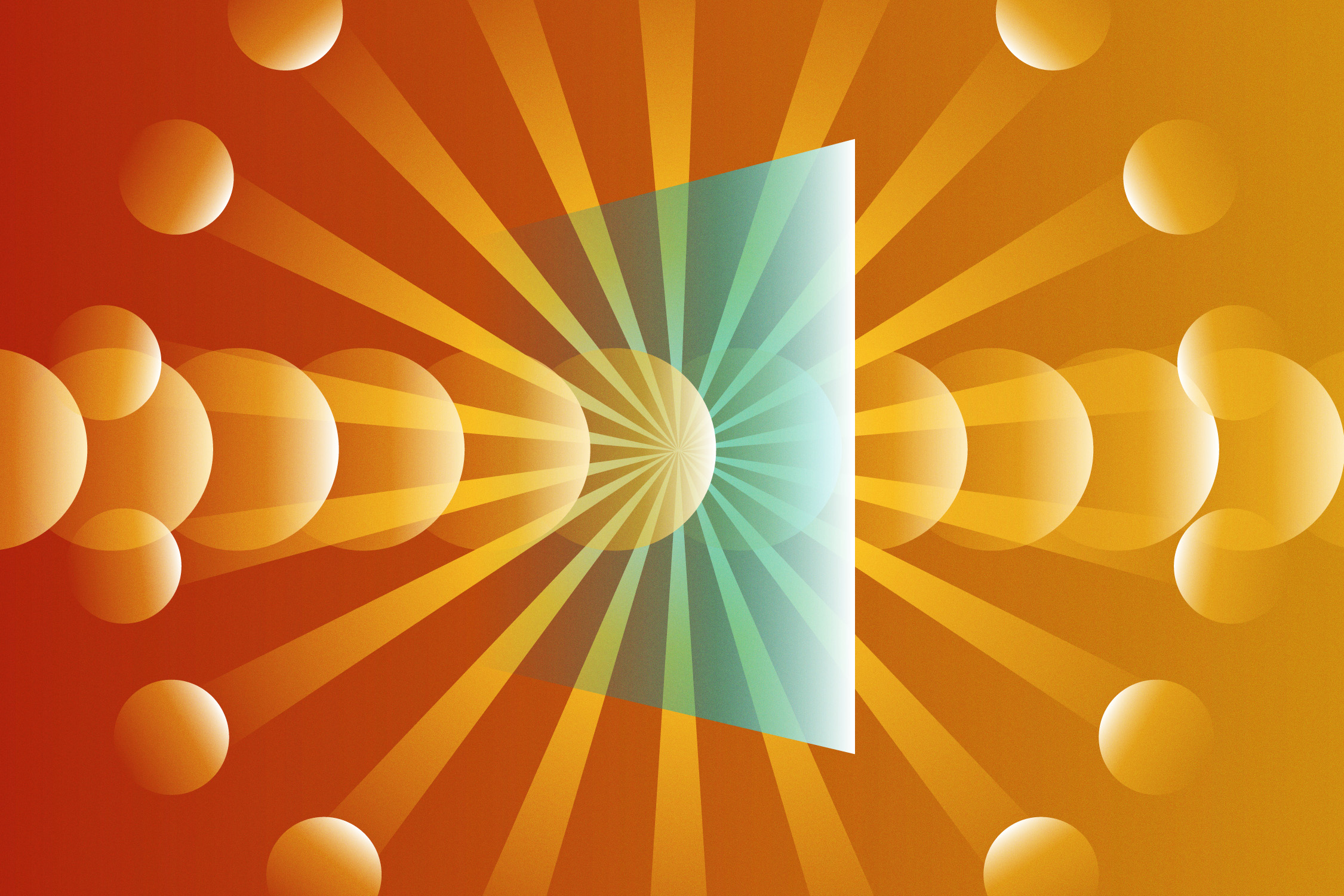Sweet, Sweet Science
Stacking sucrose molecules is a lot more complicated than it might seem
- Eleanor Hutterer, Editor

“Melts in your mouth, not in your hand” is more than just a catchy tagline. It speaks to the very feature behind the immediate and enduring success of one of America’s favorite chocolate candies, M&M’S®. The candy shell keeps the chocolate from making a mess when it melts, which made it a favorite among soldiers of World War II, when M&M’s were new and sold exclusively to the U.S. military.

Modern M&M’s varieties further rely on the candy shell because they include peanuts, almonds, and other core ingredients that go stale or rancid if exposed to air for too long. But two things remain unchanged since M&M’s early days: they are still a staple in modern military rations, and they are still made according to the original methodology, which is time- and energy-intensive.
Creating the candy shell involves coating chocolate centers with a mist of liquid sucrose (table sugar), then tumble-drying them. It takes multiple hours and large quantities of warm air to create the smooth coating. In pursuit of a better way, Mars, Incorporated, the maker of M&M’s, has funded a collaboration with Los Alamos scientists to study sucrose crystallization in order to identify new opportunities for energy savings and improved production efficiency.

Not traditionally in the candy-quality business, Los Alamos is a world leader in supercomputer simulations of various chemical processes, including the formation of crystals from solution. The way a compound crystallizes affects the performance of the final material, so Laboratory scientists model these processes to study composite compounds used to make stronger materials, or crystalline materials used to make quantum dots and solar cells. In the case of a candy shell, performance would be gauged by strength, texture, and uniformity, all of which help to protect the perishable center and maintain M&M’s unique quality.
The first phase of the project is to use computer models to optimize the sucrose-crystallization process in terms of time and energy consumption. Based on what they learn from that, the researchers may explore additional modifications down the road.
Antonio Redondo, of the Richard P. Feynman Center for Innovation at Los Alamos, explains, “We have been doing the computer modeling for about one year, but now we are beginning some experimentation. Crystallization is important in many materials, so this work represents dual-use technology—in studying sucrose crystallization, we’ll learn things about quality, stability, and performance that we can apply to other materials more central to the Laboratory’s mission.”

For a monosaccharide, like glucose, which has a six-carbon ring structure, the alignment of many molecules to form a crystalline lattice is relatively straightforward to conceptualize.
But for a disaccharide like sucrose, which is a glucose molecule joined to a fructose molecule via a shared oxygen atom, the lattice-like arrangement is much more complicated.
By applying scientific know-how through unconventional partnerships, the making of traditional treats like M&M’s (and Skittles®, another Mars, Incorporated product) can be modernized while ensuring that they continue to melt in mouths and not in hands.








